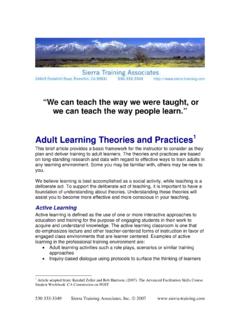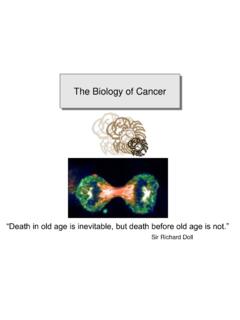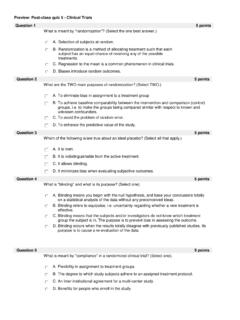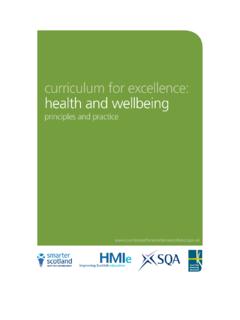Transcription of Adult Learning Theories and Practices
1 We can teach the way we were taught, or we can teach the way people learn.. Adult Learning Theories and Practices1. This brief article provides a basic framework for the instructor to consider as they plan and deliver training to Adult learners. The Theories and Practices are based on long-standing research and data with regard to effective ways to train adults in any Learning environment. Some you may be familiar with, others may be new to you. We believe Learning is best accomplished as a social activity, while teaching is a deliberate act. To support the deliberate act of teaching, it is important to have a foundation of understanding about Theories . Understanding these Theories will assist you to become more effective and more conscious in your teaching. Active Learning Active Learning is defined as the use of one or more interactive approaches to education and training for the purpose of engaging students in their work to acquire and understand knowledge.
2 The active Learning classroom is one that de-emphasizes lecture and other teacher-centered forms of instruction in favor of engaged class environments that are learner centered. Examples of active Learning in the professional training environment are: Adult Learning activities such a role plays, scenarios or similar training approaches Inquiry-based dialogue using protocols to surface the thinking of learners 1. Article adapted from: Kendall Zoller and Bob Harrison, (2007). The Advanced Facilitation Skills Course Student Workbook. CA Commission on POST. 530 333-3349 Sierra Training Associates, Inc. 2007 Experiential Learning activities or exercises (note: students don't learn from experience, they learn from reflecting on experiences in an educational setting). Paired or small group work Problem solving exercises Blended Learning using appropriate technological resources to support training Case study exercises Problem-based Learning exercises Individual, group and class work using visual, auditory or kinesthetic stimuli to prompt discussion, discourse and related class work.
3 Adult Learning Concepts (Malcolm Knowles, et al). One foundation for the transition to active Adult Learning is found in the Adult Learning theory of Malcolm Knowles in his studies of how adults learn. There are some similarities in the Adult and child classroom, although adults generally have distinctly different motivations to engage in Learning . The ALC models reflect these differences from traditional teacher-centered models of child and adolescent Instructors should be familiar with Knowles' research as a foundation to develop effective lessons and delivering them in a manner best- suited to the learner. Adult Learning theory is founded on the principles that effective training is: Relevant to the experience or intended experience of the Adult learner. Whereas children and adolescents will attempt to learn content isolated from its application, adults learn best when they see the relevance of the taught concept to their experience Engaged the Adult learner retains knowledge and concepts more readily if they are engaged in the process of discovery and exploration rather than being the recipient of information Active the Learning process should be active, and replicate as closely as possible the environment within which the skill or knowledge will be applied.
4 Rather than memorizing code sections, adults would retain and apply knowledge more effectively if they worked to discover the content, and then were able to practice its application in a simulation or scenario. Learner-centered The traditional classroom taught concepts and prepared students to pass tests and other measures of their progress. Unfortunately, the student's retention of that knowledge was often nominal beyond the confines of the class. The emerging intent of police academy training is to produce the most effective outcomes possible; to see 2. Expanding on his earlier work, Informal Adult Education (1950), Malcolm Knowles published The Modern Practice of Adult Education Andragogy versus Pedagogy (1970) which propelled the movement to distinguish Adult learners and their motivations to learn (andragogy) as opposed to children and adolescent learners (pedagogy).
5 Knowles work generated more than 200 professional articles by others in the next decade, and remains a significant foundation for all subsequent theory. 530 333-3349 Sierra Training Associates, Inc. 2007 students apply classroom skills in a real-world setting. The focus on the learner acquiring knowledge, is a critical step in effective training Instructional Systems Design There are a variety of ways to approach the planning and execution of instruction in any educational setting. This is commonly termed Instructional Design or Instructional Systems Design (ISD). ISD focuses on the most appropriate means of intervention to move the current state to an intended different future, to address deficiencies in conduct or outcome or to train in a manner that is systemic and replicable by others.
6 There are two dominant methodologies in use by ISD participants; one is ADDIE (Analysis, Design, Develop, Implement, and Evaluate), the other relies on Criterion-Referenced Instruction (CRI) protocols found in the work of Robert Mager. Although Mager's methodology may be seen in many planning texts, ADDIE and more outcome-based approaches have more validity when planning Adult Learning intended to transfer knowledge and abilities in the policing environment. The specific ISD approaches are not mutually exclusive, and the teacher planning training should assess which model could work best for their specific setting. Refer also to the work of Jay McTighe and Grant Wiggins for in-depth presentation of Understanding by Design (UbD) outcome-based lesson planning as a component of ISD. They have published extensively on UbD, and the meaning of understanding as an outcome of training.
7 One of the most powerful frames for UbD is what the learner should know and be able to do at the conclusion of your training efforts. Problem Solving and Problem Based Learning Moving most significantly away from lecture- or content-first teaching approaches, problem solving focuses on Learning through the context of a problem, and moves the learner into a Learning predicament to emphasize self- discovery. Problem-Based Learning (PBL) is a problem solving methodology being used in field training programs and some basic course academies nationally. When presented with a problem scenario, students work in one of many roles relevant to the problem, generally to determine What do we know? What don't we know that is necessary to find solutions to the problem? What do we need to find out, learn of discover?
8 What solution/s would impact the problem in a manner desired? Learning Styles and their Impact in Training (Rita Dunn). VAK Concepts related to the Learning styles of those present in the training environment and their impact on receiving and processing concepts is based in 530 333-3349 Sierra Training Associates, Inc. 2007 the research of Rita Dunn. All normally-functioning adults receive stimuli in their surroundings from visual, auditory, tactile-kinesthestic, olfactory and gustatory senses. The visual, auditory (hearing) and tactile-kinesthertic (touch and movement) (VAK) are normally addressed as primary and secondary styles or preferences of acquiring and processing information in Learning . Dunn's assertion is we each develop a preference for one of the modes of sensory input, and will use it as a primary screen to process meaning.
9 Recognizing the Learning styles of trainees may be valuable to the teacher in a variety of ways. Most commonly, those aware of these differences alter the training environment to modulate through the styles on a routine basis to ensure all present are accessing and processing desired skills and concepts. It is important to note the dominant style may not be the same for all tasks, and that learners may tend to revert to the dominant style as stress increases. Some thoughts regarding modifying the Learning experience to maximize participation are: Visual learners generally like to learn through reading and writing tasks or through the use of charts, demonstrations, videos and other visual materials. They often easily visualize faces and seldom get lost in new places Auditory learners often talk to themselves; they may also move their lips or read aloud.
10 They may have difficulty with reading or writing tasks, doing better talking to a peer and hearing what was said. Kinesthetic learners do best while touching and moving. They may lose concentration if there is little or no external stimulation or movement. They may want to take notes by drawing pictures, doodling or by making diagrams. When reading, they may want to scan the material first, and then focus on the details Multiple Intelligences (Howard Gardner)3. Gardner's research asserts we have many levels of intelligence and use one or two for the most effective Learning . Our traditional teaching and testing focuses on two such intelligences; verbal/linguistic and logical/mathematical. Gardner proposes there are at least five other kinds of intelligence that are equally as important, cutting through language, cultural and educational barriers.







